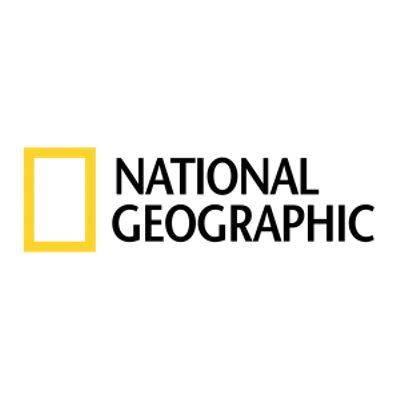
Learn about the National Geographic affiliate program.
The roots of National Geographic trace back to January 27, 1888, when a group of 33 explorers, scientists, and thinkers gathered at the Cosmos Club in Washington, D.C. The aim was to establish a society dedicated to the “increase and diffusion of geographic knowledge.” This noble mission would soon lead to the founding of the National Geographic Society (NGS), with the first issue of the National Geographic Magazine following shortly in October of the same year.
From the outset, the magazine embodied a novel approach to spreading geographic knowledge. Instead of dry, academic texts, it sought to blend rigorous research with compelling visuals. Its early pages featured articles discussing uncharted territories, daring expeditions, and captivating photographs that brought far-off lands and their inhabitants to life. This approach was groundbreaking, fostering a sense of connection and empathy with the people and places depicted.
One of National Geographic’s most enduring legacies is its unparalleled photography. The magazine’s photographers, known as “photojournalists,” have achieved legendary status for their ability to capture both the grandeur of landscapes and the intimacy of human experiences. Their lenses have immortalized everything from the majestic landscapes of the Serengeti to the haunting gazes of indigenous tribes.
The iconic “Afghan Girl” photograph, captured by Steve McCurry in 1984, remains a testament to National Geographic’s power to evoke emotion and empathy. The arresting portrait of a young Afghan refugee with piercing green eyes became an emblem of the human cost of conflict, drawing global attention to the plight of refugees worldwide.
Throughout its history, National Geographic has celebrated exploration in all its forms. From the depths of the oceans to the reaches of outer space, the magazine has chronicled humanity’s quest to understand its place in the universe.
Notable explorers such as Jacques Cousteau, Jane Goodall, and Robert Ballard have graced the magazine’s pages, sharing their discoveries and insights with readers. Cousteau’s underwater expeditions unveiled the mysteries of the ocean’s depths, while Goodall’s pioneering work with chimpanzees revolutionized our understanding of primates and our own evolution. Ballard’s exploration of the Titanic’s wreckage provided a poignant reminder of the hubris of human endeavors.
National Geographic has always emphasized the importance of cultural understanding and empathy. Through its articles and photographs, the magazine has transported readers to remote corners of the globe, showcasing the rich tapestry of human existence. By shedding light on different cultures, traditions, and ways of life, National Geographic has fostered an appreciation for the diversity that defines our world.
As the world grapples with environmental challenges, National Geographic has used its platform to raise awareness about the fragility of our planet. The magazine’s in-depth reporting on climate change, conservation, and biodiversity loss has underscored the urgent need for responsible stewardship of the Earth.
Beyond its print publication, National Geographic has expanded its educational efforts. The National Geographic Society supports a variety of initiatives aimed at promoting geographic literacy, scientific understanding, and cultural awareness. Its educational programs, documentaries, books, and digital platforms provide a wealth of resources for learners of all ages, from students in classrooms to lifelong enthusiasts of exploration.
National Geographic has seamlessly transitioned to new platforms, embracing the power of the internet to share its content with a global audience. Its website, social media channels, and multimedia presentations have extended its reach far beyond the printed page.
As National Geographic looks toward the future, its commitment to exploration, education, and enlightenment remains unwavering. With the world becoming increasingly interconnected and complex, the magazine’s role in fostering curiosity, empathy, and understanding is more crucial than ever.
National Geographic has transcended its role as a mere publication to become a cultural institution that bridges the gaps between diverse societies, celebrates the beauty of our planet, and champions the spirit of exploration. Its legacy is one of inspiring generations to not only understand the world but also to care for it, reminding us that while the Earth is vast, its wonders are delicate and worthy of our collective stewardship.
Did you know that National Geographic has an affiliate program?
Here is some basic information about what National Geographic is all about. Check it out, and if you are interested there is a link below to access the National Geographic affiliate program.
National Geographic Online Store, shopDisney – National Geographic official merchandise from shopDisney. National Geographic toys, books, accessories and more at the official shopDisney online store.

Miles Anthony Smith
Miles is a loving father of 3 adults, devoted husband of 24+ years, chief affiliate marketer at AmaLinks Pro®, author, entrepreneur, SEO consultant, keynote speaker, investor, & owner of businesses that generate affiliate + ad income (Loop King Laces, Why Stuff Sucks, & Kompelling Kars). He’s spent the past 3 decades growing revenues for other’s businesses as well as his own. Miles has an MBA from Oklahoma State and has been featured in Entrepreneur, the Brookings Institution, Wikipedia, GoDaddy, Search Engine Watch, Advertising Week, & Neil Patel.
Commission Rate & Cookie Information
National Geographic offers a commission of 2% Per Sale and their cookie lasts for 10 Days.
For more information about this offer: View the National Geographic homepage


